The Hwaseong Fortress in Suwon was built during the reign of King Jeongjo of the Joseon Dynasty. This place, where the essence of the castle architecture of the late Joseon Dynasty remains intact, has become a representative cultural property of Suwon City. Suwon Hwaseong Fortress has the tomb and temporary palace of King Jeongjo the Great's father, and Hwaseong Fortress was built according to King Jeongjo's plan. Every fall, various cultural events are held at Hwaseong Fortress in Suwon. Suwon Hwaseong Media Art Show is one of these events, and various works are displayed around Suwon Hwaseong Fortress, pleasing the eyes of citizens during the festival. If you plan to visit Suwon in Korea, we recommend that you choose the time when the event is held in the fall. Works using various light are exhibited around the promenade along the river around the Hwaseong Temporary Palace. We recommend visiting during the evening hours. Since the works are displayed around the outdoor river,...
There are many representative palaces in Seoul, but the only places I visited were Gyeongbokgung and Deoksugung. Recently, I heard that the autumn leaves of Changgyeonggung palace are so beautiful, so I visited Changgyeonggung with my son.
There are a total of five palaces in Seoul: Gyeongbokgung, Changdeokgung, Changgyeonggung, Deoksugung, and Gyeonghuigung. Although it is not a palace, Jongmyo, the royal shrine, was also an important place for the spiritual foundation of the Joseon Dynasty.
Changgyeonggung Palace and Changdeokgung Palace are very close together, and Jongmyo Shrine is also nearby.
Changgyeonggung is the third palace built during the Joseon Dynasty after Gyeongbokgung and Changdeokgung.
There are two palace systems in which the Joseon Dynasty was initially maintained. Gyeongbokgung Palace serves as a legal palace and Changdeokgung Palace plays a role as an auxiliary palace.
However, successive kings preferred to go through Changdeokgung rather than Gyeongbokgung, and as the royal family grew and the grounds of Changdeokgung became narrower.
King Seongjong built Changdeokgung Palace so that the adults of the royal family could live comfortably.
Changgyeonggung Palace Chundangji
Changgyeonggung Palace was originally built for the purpose of expanding the living space rather than the role of a palace.
Since the living space of the royal family was given priority, it is a characteristic of Changgyeonggung that the inner hall is relatively spacious compared to the outer hall.
Changgyeonggung is also the place where the story of Jang Hee-bin and Queen In-hyeon, Yeongjo and Crown Prince Sado took place.
Wolgeunmun Gate outside Changgyeonggung Palace
Changgyeonggung Palace was destroyed by the Imjin War in 1592(Invasion of Japan), but was rebuilt by Gwanghaegun in 1616. Afterwards, the entire Inner Palace Site Area was destroyed in a fire during the Sunjo era in 1830, and then rebuilt.
When Sunjong moved his residence to Changdeokgung in 1907, the Japanese imperialists demolished the adjacent Changgyeonggung palace and created a zoo and botanical garden, which was opened to the public as Changgyeongwon in 1909. This was alleged to comfort obedience, but in reality it was intended to lower the authority of the palace.
The Wolgeunmun in the photo above has a story that it was built by demolishing the northern part of Honghwamun so as not to cause trouble when visiting Gyeongmogung, a shrine built by King Jeongjo for his father, Crown Prince Sado.
Changgyeonggung stone wall road
After liberation, it was used as a botanical garden and a zoo for a while as Changgyeongwon, but on December 31, 1983, public viewing was stopped, and restoration work was started, and it was restored as Changgyeonggung on August 23, 1986. Recently, we completed a project to restore the road connecting Jongmyo for the first time in 90 years. (July 22, 2022)
In terms of feng shui(The ancient oriental theory of geography), Japan tried to break the fortune of Joseon as well by cutting off between Changgyeonggung Palace and Jongmyo Shrine, where the energy of Bukhansan Mountain flows.
Changgyeonggung Palace and Jongmyo Shrine, which were originally connected as one forest, were cut off with the opening of the Jongmyo Penetration Road (Yulgok-ro) after 1932, and Changgyeonggung Palace was also downgraded to Changgyeongwon by Japanese colonial rule.
After liberation, it was used as a botanical garden and a zoo for a while as Changgyeongwon, but on December 31, 1983, public viewing was stopped, and restoration work was started, and it was restored as Changgyeonggung on August 23, 1986. Recently, as a restoration project to restore the road connecting Jongmyo to Changgyeonggung for the first time in 90 years.
The 340m long road between Changgyeonggung Palace and Jongmyo Shrine was revived as a historical space, and Yulgok-road was turned into a tunnel.
I visited Changgyeonggung Palace with my son on a sunny day, and in early November, the autumn leaves were spectacular. Even outside the wall, the colorful autumn leaves inside Changgyeonggung could be seen.
Considering that it rained a lot in the afternoon and the autumn leaves had fallen, it seems that I visited at an exquisite time.
Changgyeonggung Palace is open from 09:00 to 20:00. In case of visiting Hamyangmun Gate in conjunction with Changdeokgung Palace, the ticketing time is generally adjusted to 17:00, from June to August when the sun is longer, from 17:30 to November to January from 16:30.
The admission fee is 1,000 won for Koreans, and only those between the ages of 25 and 64 are charged. For foreigners, the admission fee is 1,000 won for those aged 19 to 64, and 500 won for those aged 7 to 18.
My son and I bought tickets at the ticket office in front of Honghwamun to enter only Changgyeonggung Palace. Changdeokgung is thinking of making a reservation and visiting when possible.
If you walk along this road where the autumn leaves are at their peak, you will arrive at Chundangji Pond.
Chundangji was a small pond that was located in front of Chundangdae, where they used to shoot bows and look at the past.
In today's Chundangji, the rice paddy called "Nenongpo", where the king had farmed himself to set an example for the people, was dug up by the Japanese and made into a large pond.
The beauty of Chundangji seems to double as the autumn leaves blend in with the beauty of the pond.
There was also a white pine tree on the side of the road, but it is a really unusual tree. The overly white bark of the tree creates a unique atmosphere, as if it had been powder coated on the trunk.
white pine
“White pine has a white bark, and when the pieces of bark are old, they fall off by themselves, and three leaves are gathered.
Passing Chundangji and going higher, you will see a large greenhouse.
There were many people in hanbok and photographers in the beautiful scenery against the background of Chundangji in front of the large greenhouse. If I hadn't been able to take pictures that day, the autumn leaves would have lost a lot of the afternoon rain, so the timing was perfect for them too...
The Grand Greenhouse was built in 1909 and is the first Western-style greenhouse in Korea. The exterior of the large greenhouse made of iron and glass, which were new building materials at the time, shows a very unusual appearance in the palace, where most of the old wooden pavilions are used.
It is a representative building of Changgyeonggung, which was damaged by the Japanese imperialism to downgrade the authority of the palace. As it stands, it is now designated as a registered cultural heritage in the sense of a modern cultural heritage.
After recovering a certain amount of energy, I went around Chundangji again and moved toward the Inner Palace Site Area.
Inner Palace Site Area
"The forest area in front was a living area full of residences for royal women. Among them, Yohwadang and Chiyohyeon were buildings built for princesses by Hyojong, and Tonghwajeon was used as a wedding hall. There were many villages, and there were buildings related to the little princes, but all inner palace area disappeared during the fire in 1830 and the Japanese occupation period."
A drink vending machine was installed, so I was thirsty for a while here because I was a little thirsty from the sun and walking.
When I move again with strength, I see Jibbokheon and Myeongchunheon.
It is the only remaining building among the residences of concubines in the Changgyeonggung area, and Yeongchunheon is related to King Jeongjo. There is a hidden intention to show filial piety to Crown Prince Sado by providing a separate residence in front of the building where Crown Prince Sado was born, and to show his will to the prince in Tongyeongjeon. Jibbokheon is the place where Sunjo was born and the first birthday party was held.
Yanghwadang is the sleeping quarters of Changgyeonggung Palace and is located to the east of Tongyeongjeon Hall.
It is said that the writing on the signboard was written by Sunjo himself during restoration in 1833. It was built during the construction of Changgyeonggung and survived the Imjin War. It is said that Injo, who returned from Namhansanseong Fortress during the Byeongja Horan, mostly stayed here. In 1790, the fire of Tongyeongjeon did not burn, so King Jeongjo and his servants thought it a miracle. It was restored in 1833, and Queen Myeongsun, Queen of King Cheoljong, passed away here.
Haminjeong, a pavilion in Changgyeonggung Palace, was built with the same name after demolishing the previous building by King Injo in 1633. When Yeongjo and Crown Prince Sado had a bad relationship, Crown Prince Sado was angry at Yeongjo's one-sided criticism, and there was an incident where he accidentally burned down Nakseondang, one of the Donggung buildings. At this time, there is an anecdote that Yeongjo learned of Crown Prince Sado's arson and had his officials gather in Ham Injeong, then summoned Crown Prince Sado and rebuked him harshly in front of him. It is said that Crown Prince Sado, who was enraged at this time, jumped into the well in the yard in front of the underworld, but managed to rescue him by his dismayed servants and the Nain.
As the last route, we headed to Myeongjeongjeon.
Myeongjeongjeon retains its original appearance since 1616, when Gwanghaegun rebuilt Changgyeonggung after the Japanese Invasion of Korea. It is small in size with a single-story roof, but it is the oldest of the palace's main halls.
As the main hall of Changgyeonggung, it was used as a place for officials to give New Year's greetings to the king or to hold major national events, and it was also used as a place to welcome foreign envoys. Although it is small in scale as the main hall of the palace, it shows the style of the early Joseon Dynasty.
II couldn't take a picture of Myeongjeongmun Gate because it is currently under repair, but the ceramic dolls on the roof caught my eye, so I took a picture.
It is said that earthenware dolls were placed on a tiled roof in the form of 10 gods and characters from the novel Journey to the West to prevent fleshing.
10 The gods consist of earth gods such as Daedangsabu (Samjangbeopsa), Son Haengja (Son Goku), Jeolpalgye, Sahwasang (Saojeong), Mahwasang, Samsal Bodhisattva, Lee Guryong, Pangolin, Lee Gwibak, and Natodu.
The Okcheongyo Bridge that you can see from Myeongjeongjeon is designated as a treasure, and when you enter Honghwamun, it crosses the Okryucheon Stream flowing from north to south. Because the style and sculptures are beautiful to match the bridge of the palace, only this bridge is designated as a treasure. It is believed to have been built in 1483, the year of King Seongjong.
Honghwamun is the main gate of Changgyeonggung. It was built in 1484, the 15th year of King Seongjong of the Joseon Dynasty. Looking up, the dancheong is very impressive.
I went to Honghwamun again.
As I turned around the stone wall path of Changgyeonggung and returned home, I thought that I was very fortunate that this palace was restored instead of remaining as Changgyeongwon. I hope that the restoration will be more active like the road connecting Jongmyo, and I plan to visit again with Changdeokgung next time.




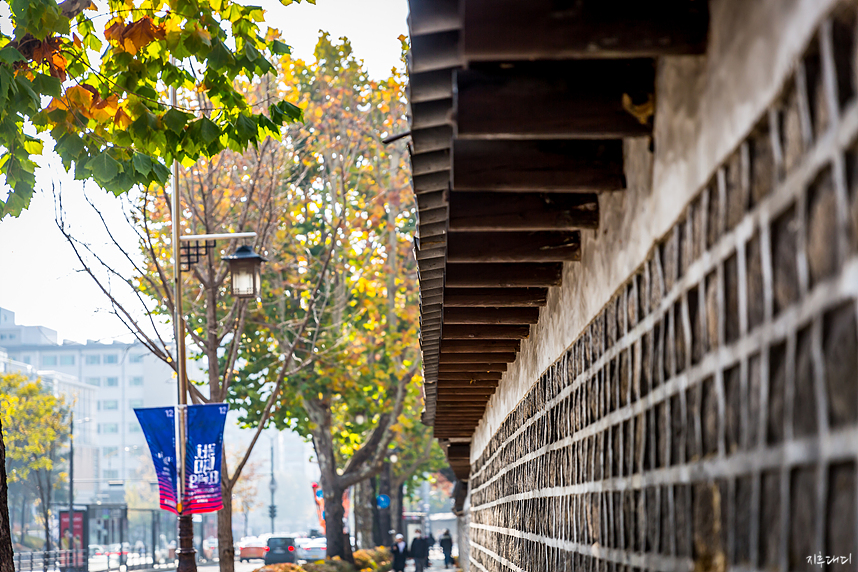




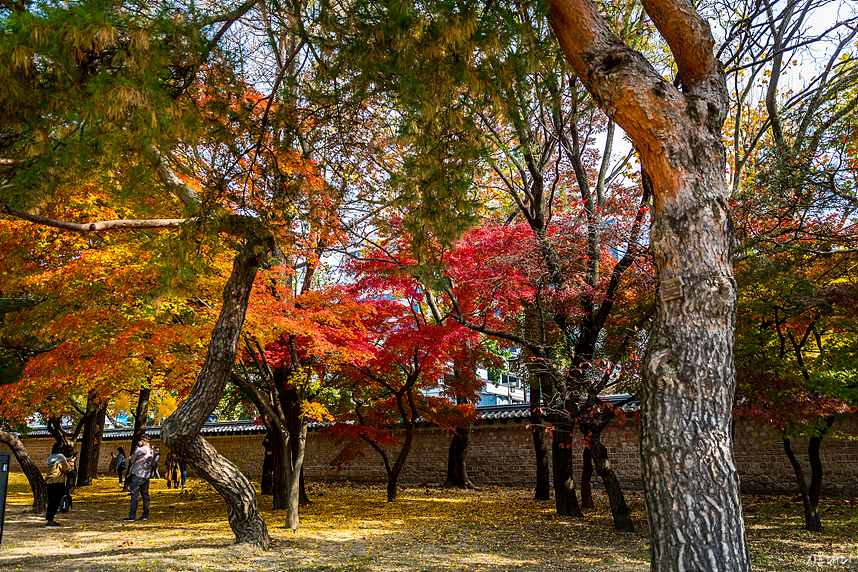

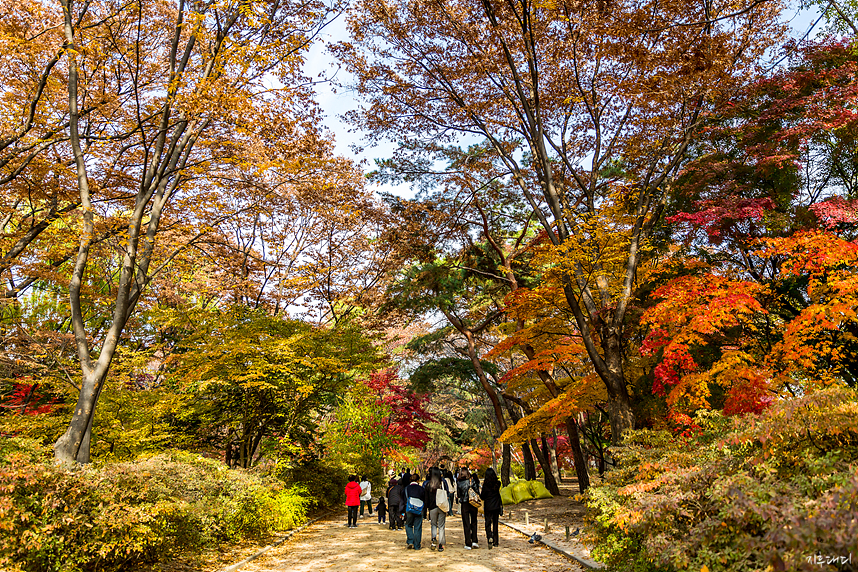






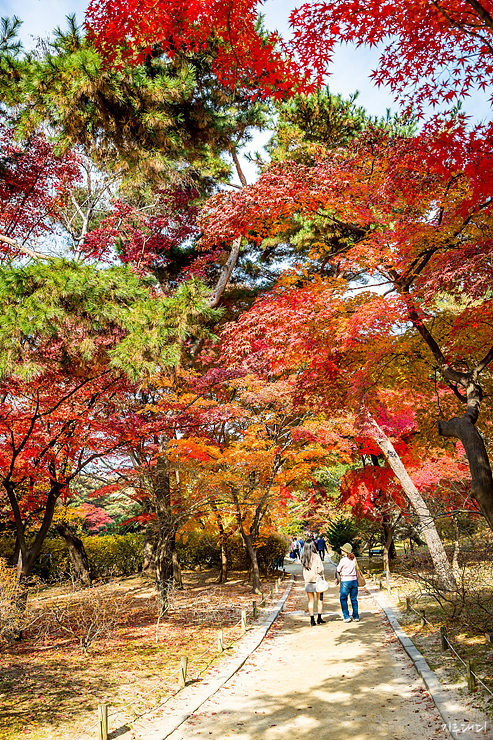


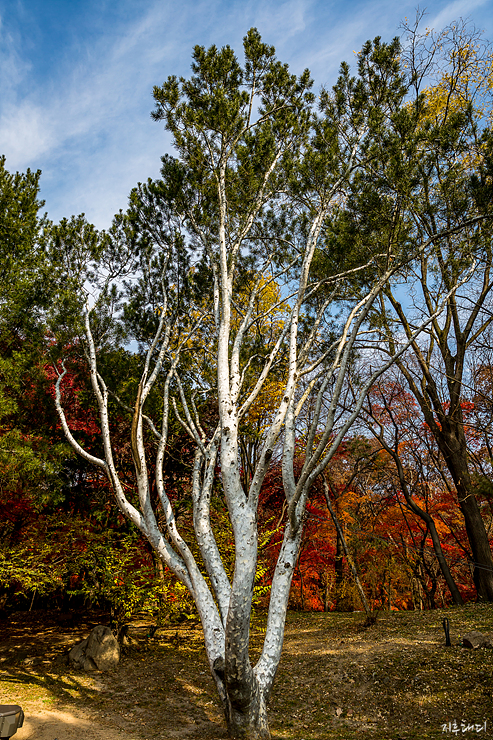








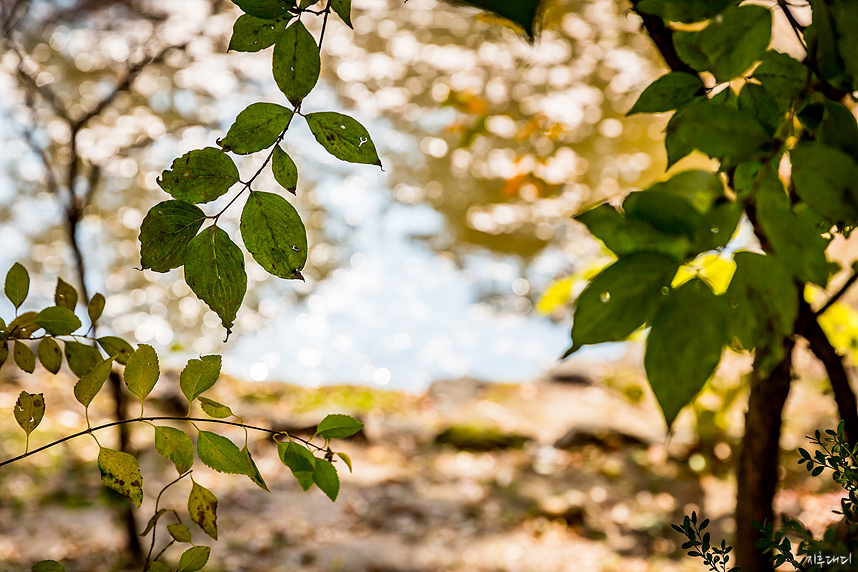







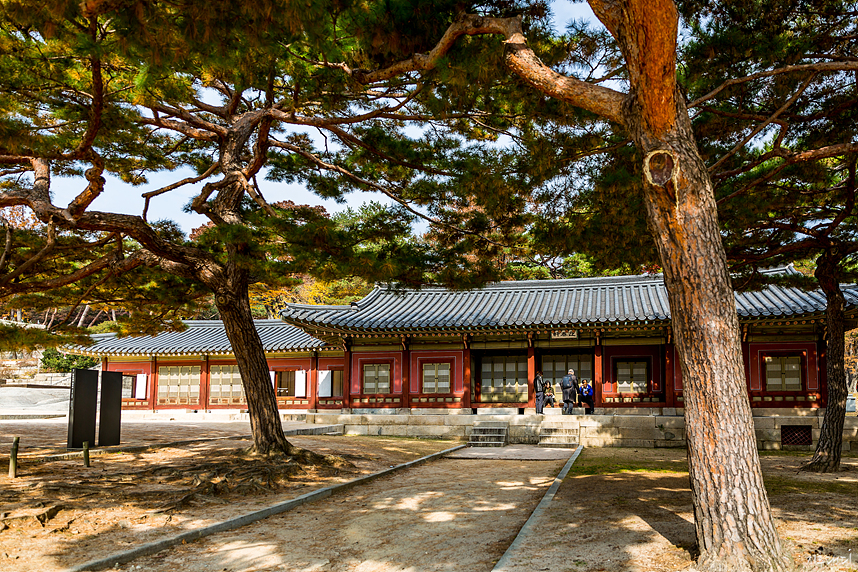


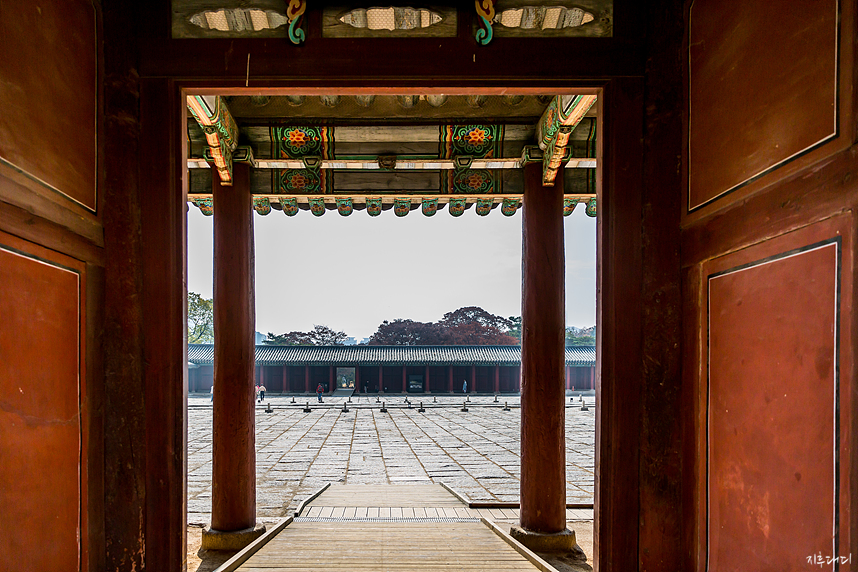

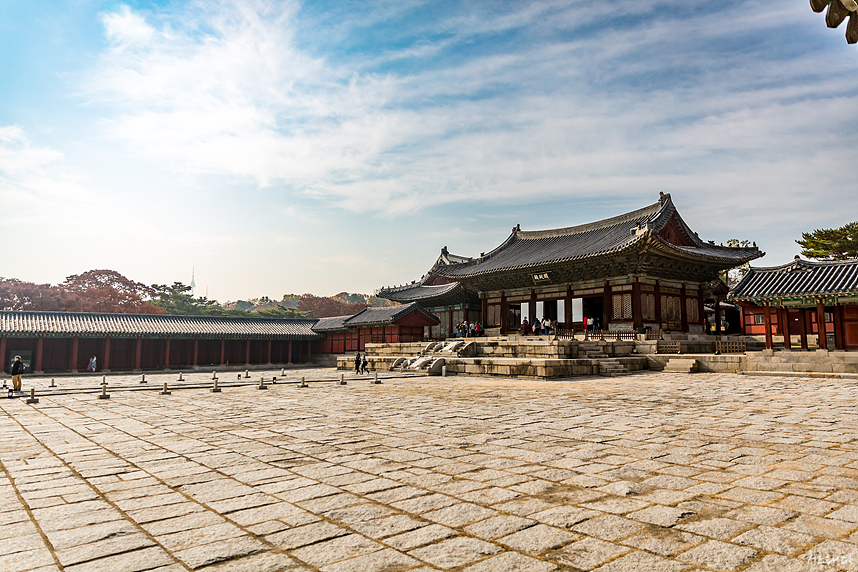


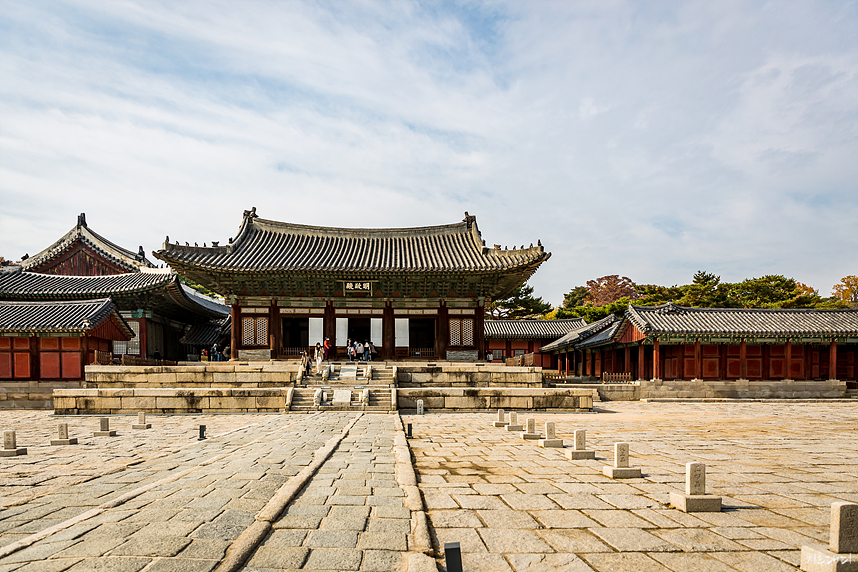

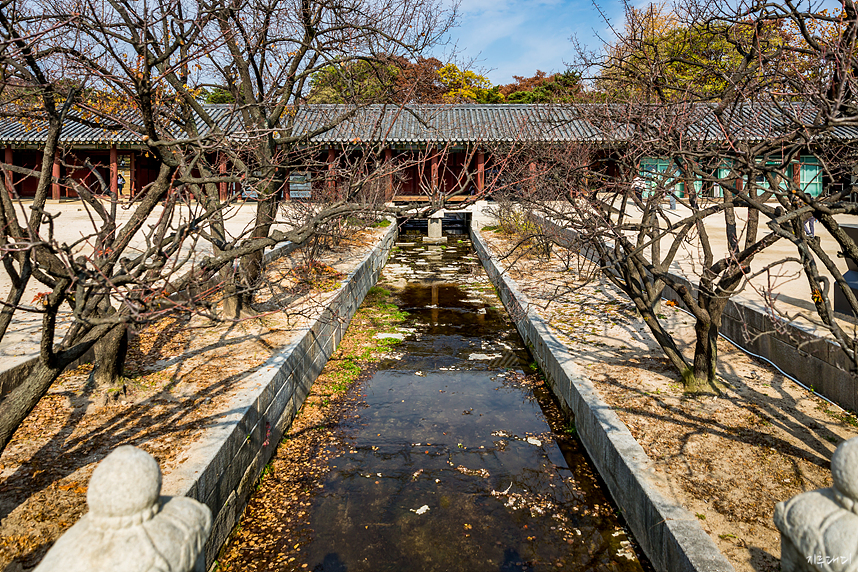





Comments
Post a Comment